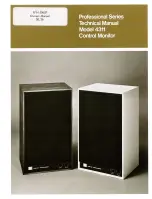
Page 68
FT
DX
9000 C
ONTEST
O
PERATION
M
ANUAL
U
SING
THE
A
UTOMATIC
A
NTENNA
T
UNER
Main Tuning Dial
TUNE switch
RF PWR knob
The Automatic Antenna Tuner (hereinafter referred to as the “ATU”) built into each FT
DX
9000 Contest is crafted to ensure
a 50-Ohm load for the final amplifier stage of the transmitter. We recommend that the ATU be used whenever you operate
on the FT
DX
9000 Contest.
Advice
The ATU of the FT
DX
9000 Contest, being located inside the station, only adjusts the impedance presented to the
transceiver at the station end of your coaxial cable feedline. It does not “tune” the SWR at the antenna feedpoint itself.
When designing and building your antenna system, we recommend that every effort be made to ensure a low SWR at
the antenna feedpoint.
The ATU of the FT
DX
9000 Contest includes 100 memories for tuning data. Eleven of these memories are allocated,
one per Amateur band, so that each band has at least one setting preset for use on that band. The remaining 89 memories
are reserved for the 89 most-recent tuning points, for quick frequency change without the need to retune the ATU.
The ATU in the FT
DX
9000 Contest is designed to match impedances within the range of 16.5 Ohms to 150 Ohms,
corresponding to an SWR of 3:1 or less. Accordingly, simple non-resonant whip antennas, along with random-length
wires and the “G5RV” antenna (on most bands) may not be within the impedance matching range of the ATU.
ATU O
PERATION
1. Rotate the RF PWR control (#
) fully clockwise
(to the right).
2. Use the MAIN Tuning Dial knob (#
) to set the
radio to desired operating frequency within the Ama-
teur band.
3. Press the TUNE switch (#
) momentarily to place
the ATU in the transmit line (no adjustment/tuning will
occur yet). An LED inside the TUNE switch will
glow red continuously.
Quick Point
The momentary press of the TUNE switch will turn
the tuner on, and the microprocessor will automati-
cally select the tuning point closest to the current op-
erating frequency.
4. Press and hold in the TUNE switch for two sec-
onds to begin automatic tuning. The transmitter will
be engaged, and the red LED imbedded in the TUNE
switch will blink while tuning is in progress. When
the optimum tuning point has been reached, the radio
will return to receive, and the red LED will again glow
steadily (instead of blinking).
5. While tuning around the band using the Main tuning
dial, you will observe that the TUNE LED blinks
momentarily every 10 kHz. This momentary blinking
indicates that a new tuning window has been entered.
If you want to save tuning data associated with this 10
kHz window, repeat step 4 (above) for each such win-
dow. On bands like 1.8 MHz where the impedance
may change rapidly, the storage of a number of tuning
points is recommended.
6. To disconnect the ATU from the transmit line, press
the TUNE switch momentarily. The red LED im-
bedded in the TUNE switch will go out, confirm-
ing that the ATU has been turned off. In the “Off”
mode, the transceiver will be directly connected to
the coaxial cable connected to your antenna, and will
operate based on whatever impedance is present at
the station end of the coax.
Advice
The ATU is connected both to the transmitter and the re-
ceiver, and its natural RF selectivity has a beneficial effect
in rejecting out-of-band energy during reception. Accord-
ingly, we recommend that the ATU be left “On” at all times.
Quick Point
As shipped from the factory, only one ATU alignment
point is saved on each Amateur band. This was memo-
rized during the final alignment and performance veri-
fication stages on the production line.
The momentary flickering of the TUNE switch’s
LED occurs whenever you cross over into a new 10
kHz ATU memory window.
Note
Although transmitter power is decreased to 100 Watts
(maximum) during tuning, by all means please check the
operating frequency before beginning the tuning process,
to be sure you are not interfering with others who may
already be using the frequency.
Terminology
Antenna Tuner Memories
The microprocessor of the ATU makes a note of the positions of the tuning capacitors and the selected inductors, and stores
the data for each 10 kHz window in which tuning has occurred. This eliminates the need to re-tune every time you return to
a frequency on which you already have completed the tuning process.
“HI-SWR”
(LED glows Red)
Содержание FT DX 9000 CONTEST - 2
Страница 1: ...FTDX9000 Contest Operation Manual...
Страница 2: ......
Страница 81: ...Page 79 FT DX 9000 CONTEST OPERATION MANUAL NOTE...
Страница 134: ...Page 132 FT DX 9000 CONTEST OPERATION MANUAL NOTE...
Страница 157: ...Page 155 FT DX 9000 CONTEST OPERATION MANUAL DUAL RECEIVE UNIT RXU 9000 NOTE...
Страница 166: ...Page 164 FT DX 9000 CONTEST OPERATION MANUAL NOTE...
















































